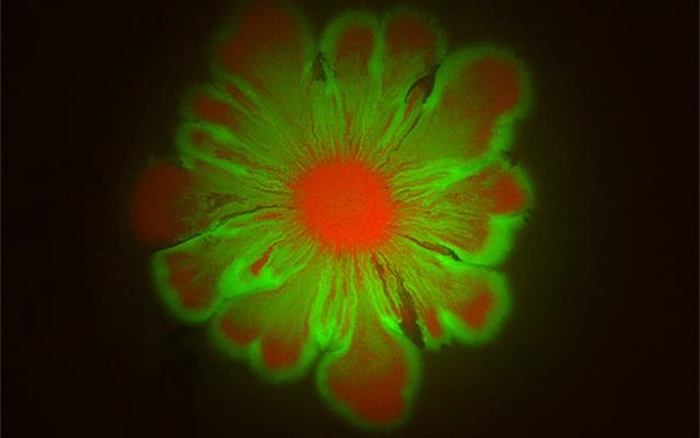Even bacteria can draw splendid choreographies like skilled dancers: this is demonstrated by the flower that seems to bloom on a cell-culture dish when two strains of bacteria are grown together. An unprecedented spectacle of nature, described in the eLife magazine by the University of California in San Diego, which will help to clarify the mechanisms by which different bacteria interact with each other to form the biofilm, the dangerous patina that can stick on teeth or medical devices (such as pacemakers and catheters) causing infections.
The protagonists of this revealing dance are two common bacteria: Escherichia coli and Acinetobacter baylyi. The first, by itself, is a little awkward: when alone on the 'dance floor' of agarose (the polysaccharide used in the laboratory to grow bacteria), it remains mostly still. A. baylyi, on the other hand, is a skilled dancer, able to wiggle easily thanks to his thin 'legs' (the appendices called 'pili'). When the two meet, the spark strikes: with a masterful grip, A. baylyi lifts E. coli and transports him into this wild dance, drawing within 24 hours a petal-rich, flower-like structure.
To find out the secret of this dance, the researchers developed a series of mathematical models that take into account the different physical properties of the two bacterial strains, especially the growth rate, motility and friction they generate on the agarose substrate. From the calculations it emerged that everything happens along the expansion front of the bacterial colony: where the lazy E. coli are more concentrated , the dance advances more slowly than elsewhere, creating the shape of the petal.









Caricamento commenti
Commenta la notizia